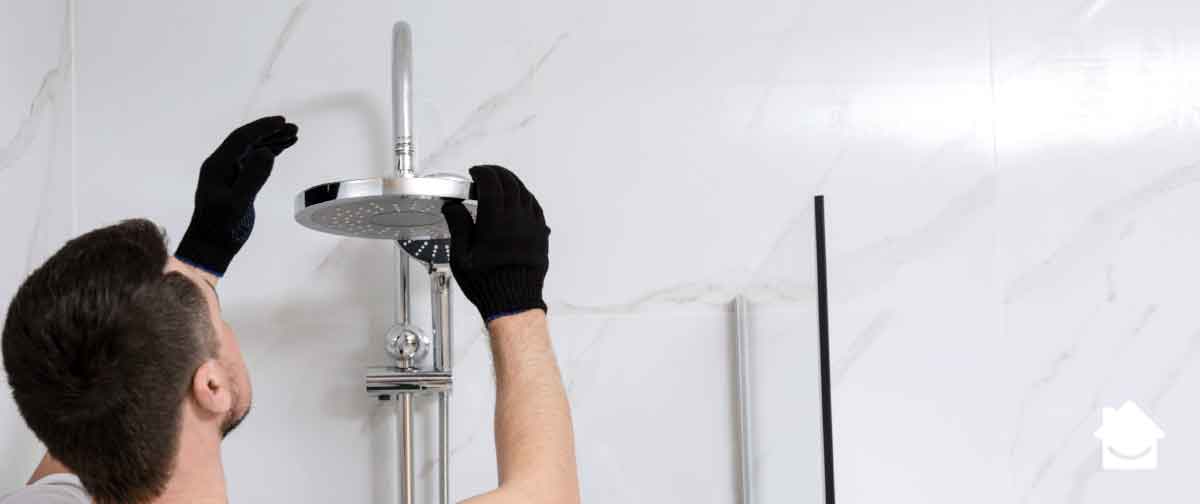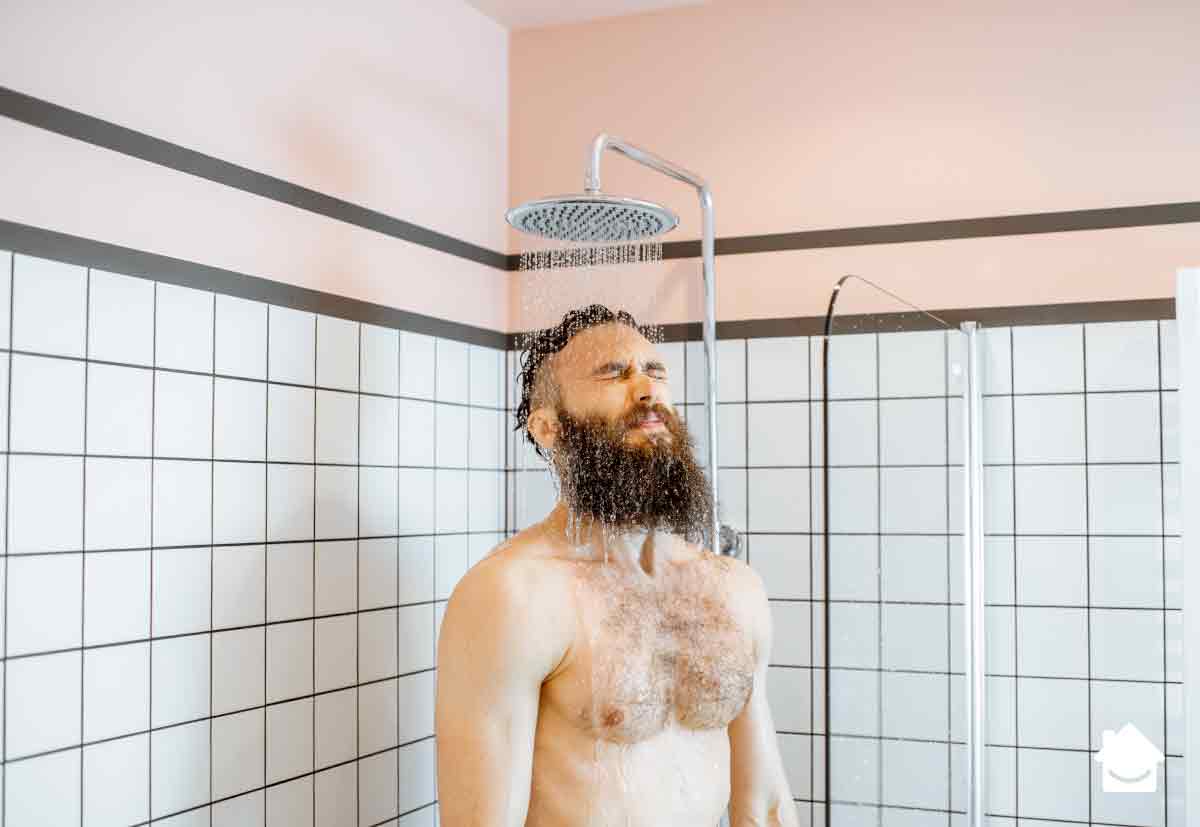When you’re looking forward to a refreshing shower, there’s nothing worse than being greeted with an unenthusiastic dribble of water.
Fortunately, most causes of low water pressure in the shower can be easily fixed.
In this article, we look at the most common causes, explain how to test your water pressure and provide a helpful checklist of things you can try to fix the problem.
Signs of low water pressure
The first sign of low water pressure is your shower running slowly. But, before condemning the shower, check the problem doesn’t extend to the whole house by carrying out the following test:
How to test your water pressure
This can get a little complicated! First, you’lll need a:
- 1-2L measuring jug
- Stopwatch
- Calculator
Then, to calculate your water pressure – test each tap and the shower as follows:
- Place the measuring jug under the tap or shower being tested
- Get your stopwatch ready!
- At the same time as turning the tap on full – press start on the stopwatch
- Time 6 seconds (then turn off the tap and press stop on the stopwatch)
- To calculate the water pressure, multiply the amount of water in the jug in litres by 10.
This gives you the flow rate in litres per minute (for example, 0.8L x 10 = 8L per minute)
Your water pressure should be at least 10L per minute. Anything under 10L is considered low pressure.
Ideally, you’d want the pressure to be between 10-15L per minute. And anything above that is good.
Here’s what the results can tell you
- If the pressure in all the taps and shower is weak: you have a plumbing problem somewhere in your home. For example, your stopcock may not be fully open, or you may have a leak. Use our handy guide on how to diagnose leaking pipes to help you find it.
- If the hot water pressure is low, but the cold is fine: You may have sediment and limescale build-up in the pipes or faucet, or it could be caused by a partially closed or restricted shutoff valve. Read further on for fixes.
- If your hot water has low pressure in the shower only: the problem lies with the shower. Follow our checklist below to find the cause and fix it.
Causes of low water pressure in the shower
There are many common causes of low water pressure, some of which are out of your control.
For example, your pressure can be affected by how far your home is from the water reservoir, whether you live on high ground (meaning the water has to travel uphill), and how much water your neighbours are using at certain times of the day.
However, there are other causes that you can fix, such as:
- Limescale and sediment build-up causing low water pressure in the shower head: This can be fixed by simply cleaning or replacing the showerhead. See the next section for instructions on how to do this.
- Restrictive valves on the showerhead: A low-flow showerhead may have been fitted to your shower, or your showerhead may have a valve that restricts the flow of water. These restrictors are put in place to help save water. However, sometimes they may limit it too much. You may be able to adjust the restrictor or, if not, remove it entirely or replace the showerhead.
- A clogged water system: If you live in an old house with iron pipes, the iron may have rusted, broken off and caused an obstruction. Older pipework is also at risk of being obstructed by dirt, gravel or sand entering the pipes. In this situation, it is best to call a professional plumber who can advise you of the best solution, which may include replacing pipes or flushing the system.
Issues with the main water piping system: If you’ve ruled out all other possible causes, there could be a problem with the water pressure as it enters your home. It’s possible to increase the flow, but this must be done carefully, so it’s best to call your water provider.
How to increase shower water pressure

Depending on your issue, there are several ways you can increase the water pressure in your shower. Follow the checklist below to find the right solution for you.
Check for leaks
If you’ve tested the water pressure in all the taps and shower (see ‘How to test your water pressure’ above) and found low water pressure in the house as a whole, then you may have a leak somewhere.
Follow the advice in our article on common water leaks in the home and how to fix them or contact HomeServe if you need help.
Check for shower head sediment
If you’ve had your shower for some time, there may be a build-up of limescale and sediment in the showerhead obstructing the flow of water.
To clean it, unscrew the showerhead from the hose and immerse the whole thing in a bowl of vinegar for 8 hours. Then manually remove any remaining debris.
Top tip: Use a toothpick to push limescale out of the small holes.
If this doesn’t work, it’s probably time to replace the showerhead with a new one.
Ensure your stop tap is open fully
If your hot water is supplied through a combi boiler, the water pressure is controlled by a stop tap. Check your boiler manual to locate the stop tap and ensure it’s fully open.
Also, check the water pressure. As a minimum, it should be 1 bar.
Install a shower pump
If you have a gravity-fed plumbing system (i.e. you have a cold water tank and a hot water cylinder) consider having a pump installed. Pumps give the water a boost as it flows from the hot water tank to the shower. Or you could change your shower to a power shower that has a pump already built-in.
Installing an electric shower is another option. However, because electric showers only use cold water, the water has to flow slowly to allow time for it to heat up. This gives them a gentler flow.
Whichever option you choose, it’s always best to get a professional plumber to do the installation for you.
When to call a professional
There are a few DIY fixes to your problem, such as cleaning or replacing the showerhead, removing restrictor valves, checking your stopcock is fully open and checking your combi boiler stop tap.
But if you have low pressure throughout the home caused by a leak or clogged pipes, or if you need a pump or new shower fitted, it’s time to call in a professional plumbing Home Expert.




